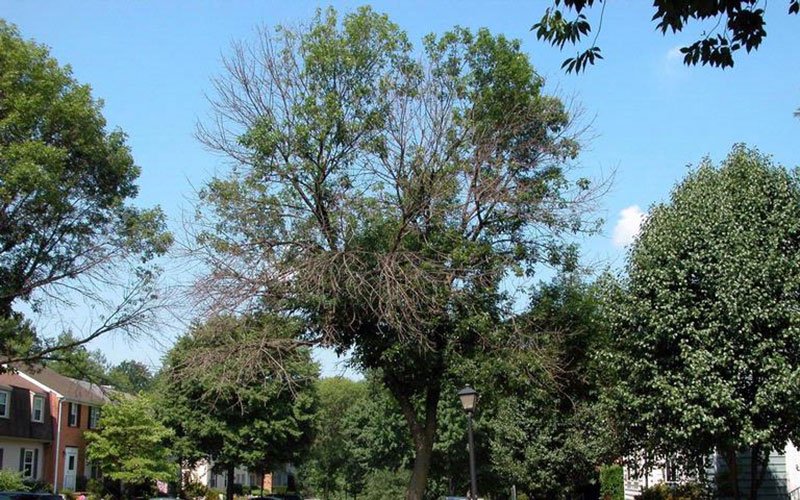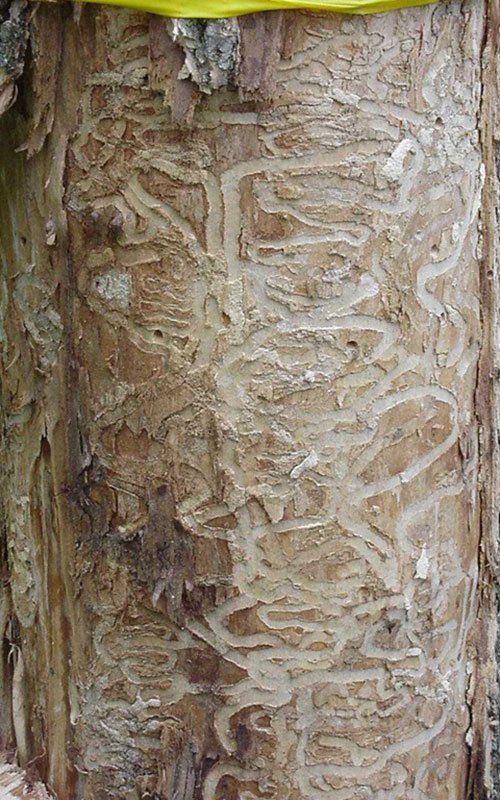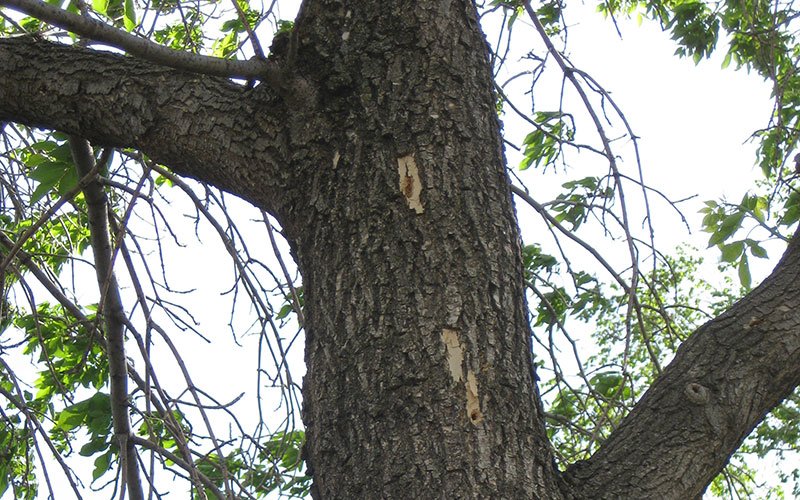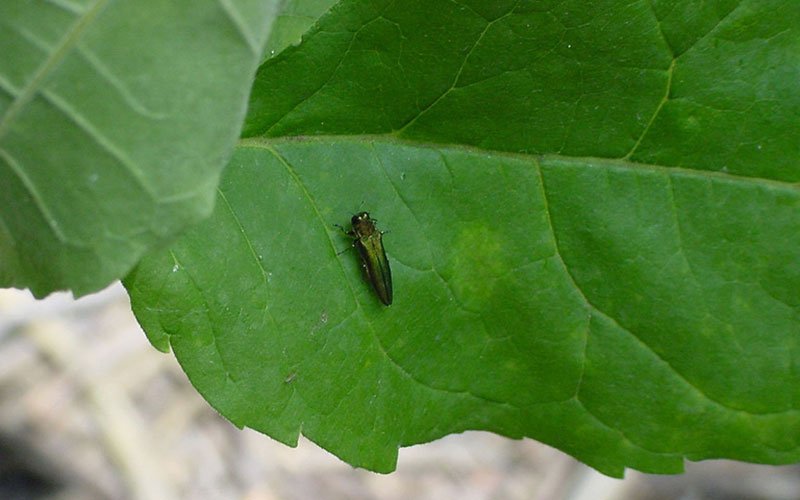Emerald Ash borer
Emerald Ash Borer
General EAB Overview
The Emerald ash borer is an invasive insect that has killed millions of ash trees throughout the eastern half of the U.S.
The EAB larvae kill ash trees by tunneling under the bark and feeding on the part of the tree that moves water and sugars up and down the trunk.
This is a significant threat to Minnesota forests that are home to an estimated 1 billion ash trees.
Signs & Symptoms of emerald ash borer infestation
(Source: MN DNR)
Black Ash Tree
overview black ash forests
Black ash wetlands are a major component of forest communities throughout the northern Midwest. These wetlands support wildlife and provide ecological services, like water filtration and act as a carbon sink. These niches occur at the toes of bluffs where groundwater is being discharged, like headwater wetlands and drain ways along intermittent streams.
High concentrations of black ash wetlands, that are highly susceptible to a novel Emerald ash borer invasion, can be found along the St. Croix near Marine on the St. Croix and Stillwater.
EAB Management Program
There are now 51 counties in the state with EAB. The Minnesota Department of Agriculture (MDA) has enacted a quarantine to limit the movement of firewood and ash material into Minnesota and out of infested counties. The MDA issues quarantines for all counties known to have EAB to reduce the risk of further spreading the tree-killing insect.
AEB Information for Homeowners
-
Guidelines for landowners:
Ash Woodlands
Prioritize forests:
Close to confirmed infested areas.
Contain high percentage of ash.
Areas with high-productivity (forested swamps, northern wet ash swamps).
Low-productivity areas (northern very wet ash swamps).
Avoid planting ash trees.
Prepare forests with abundant ash in advance of emerald ash infestation, management takes longer in wet areas.
Before and after tree cutting plant a variety of site-appropriate tree species where ash was abundant.
Managers should harvest ash trees before an emerald ash borer infestation to capture the timbers value.
Avoid clearcutting when harvesting mature mature ash and promoting other tree species. Removing groups (0.1 to 0.5 acres) of ash is best in wet forests. To promote successful growth of other species, if present (red maple and balsam fir), use strip clearcuts and strip shleterwood methods. Leave some ash behind as it can provide wildlife habitats after they die.
Free assistance for woodland owners to make an informed decision about timber harvesting (Call before you cut).
Receive technical advice and long-range management planning through the DNR (Forest Stewardship Program).
Prevent stump-spouting by killing ash stump sprouts the year after cutting smaller black and green ash.
More Information: Managing Ash Woodlands
Yard Trees
Be proactive about management
Treat ash trees with insecticide every 2-3 years for entire life.
Consider removing ash trees and replanting with trees that are right for your area using good planting practices
Contact an ISA Certified Arborist
To determine the best course of action using insecticides contact a professional with a Minnesota Pesticide Applicator License
More helpful information: Homeowner Guide to Insecticide Selection, Use, and Environmental Protection
-
The Minnesota Department of Agriculture (MDA) recommends using the Tree Care Registry to begin your search for tree care companies.
-
-
“It is illegal to transport hardwood firewood out of Minnesota quarantined counties unless it is MDA certified firewood. Moving uncertified hardwood firewood out of quarantine counties is illegal and is punishable up to a $7,500 fine per violation per day.”
Other materials that are considered regulated by the MDA:
Ash logs
Ash tree waste
Ash chips and mulch
All firewood (non-coniferous)
-
1 ) Contact Report A Pest via email or by leaving a detailed message at 1-888-545-6684.
2 ) Send a report through the Great Lakes early Detection App
3 ) Login or create an EDDMapS Midwest account and submit a report







